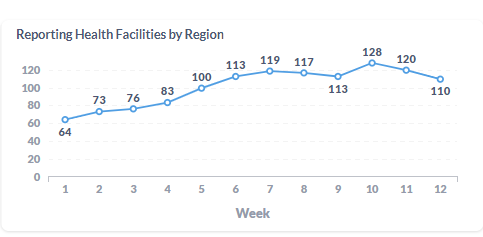Emergency Response Digital Tools: Bridging the Gap for Routine Health Information Reporting
The conflict in northern Ethiopia has severely impacted the availability and accessibility of essential healthcare services, including HIV care and treatment. The resulting damage to the health management information system (HMIS) infrastructure and tools have made access to medical information impossible, making healthcare and programmatic decisions increasingly difficult. As a result, patients and clients in chronic care have been significantly affected, resulting in reduced quality of care.
To address this challenge, the Digital Health Activity (DHA), with funding from the President’s Emergency Plan for AIDS Relief (PEPFAR), designed and deployed an electronic Emergency Response Reporting Tool (ERRT).
The ERRT is built on an open-source platform from Metabase. ERRT is customized for data analytics, visualization, and generating reports during emergency response situations. As an interim solution, the ERRT is designed to increase the availability, accessibility, and utilization of mission-critical and high-quality data on HIV and other essential services and programs in conflict areas and among sites with internally displaced people until routine services and reporting are restored.

This real-time data allows regional health bureaus (RHBs) and the Ministry of Health (MOH) to receive critical information for timely decision-making. The dashboard provides RHBs and the MOH with a tool to tailor interventions, identify priority areas, and monitor progress. DHA also supported the socialization of the ERRT, enabling the collection, analysis, and presentation of service and disease reports. The intervention resulted in an increase in the number of facilities reporting on emergency indicators in the Tigray Region over time, indicating an improvement in the health information system and service delivery (Figure 1). Furthermore, the system helped monitor the linkage status of patients in chronic care, with 78.2% of clients who were on follow-up before the conflict being linked back to HIV care and treatment.
In summary, the ERRT has been a valuable tool in bridging the gap for routine health information reporting in conflict-affected areas of Ethiopia. It has enabled HFs to submit data in real time, leading to timely decision-making, improved service delivery, and an increase in the number of patients being linked back to care. The success of this intervention highlights the importance of investing in digital tools to strengthen health systems and improve health outcomes, particularly in crisis situations.